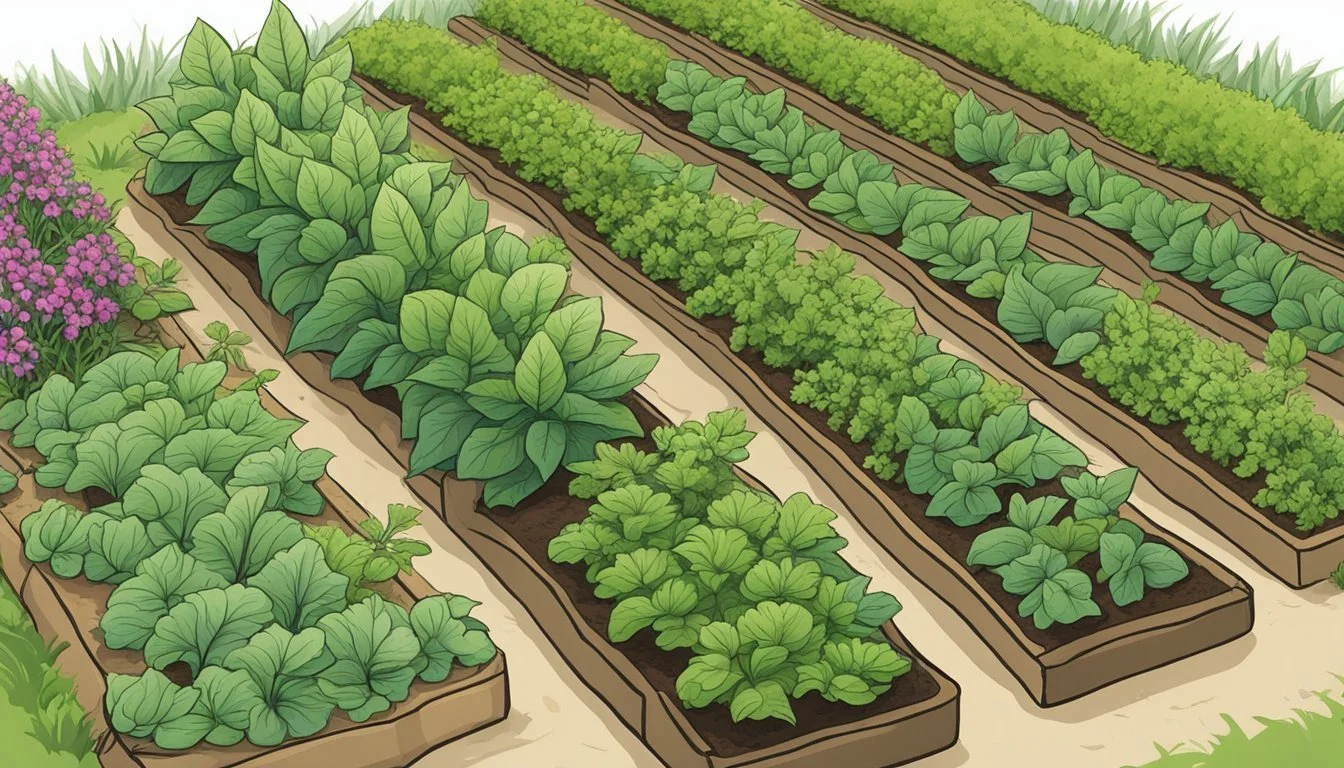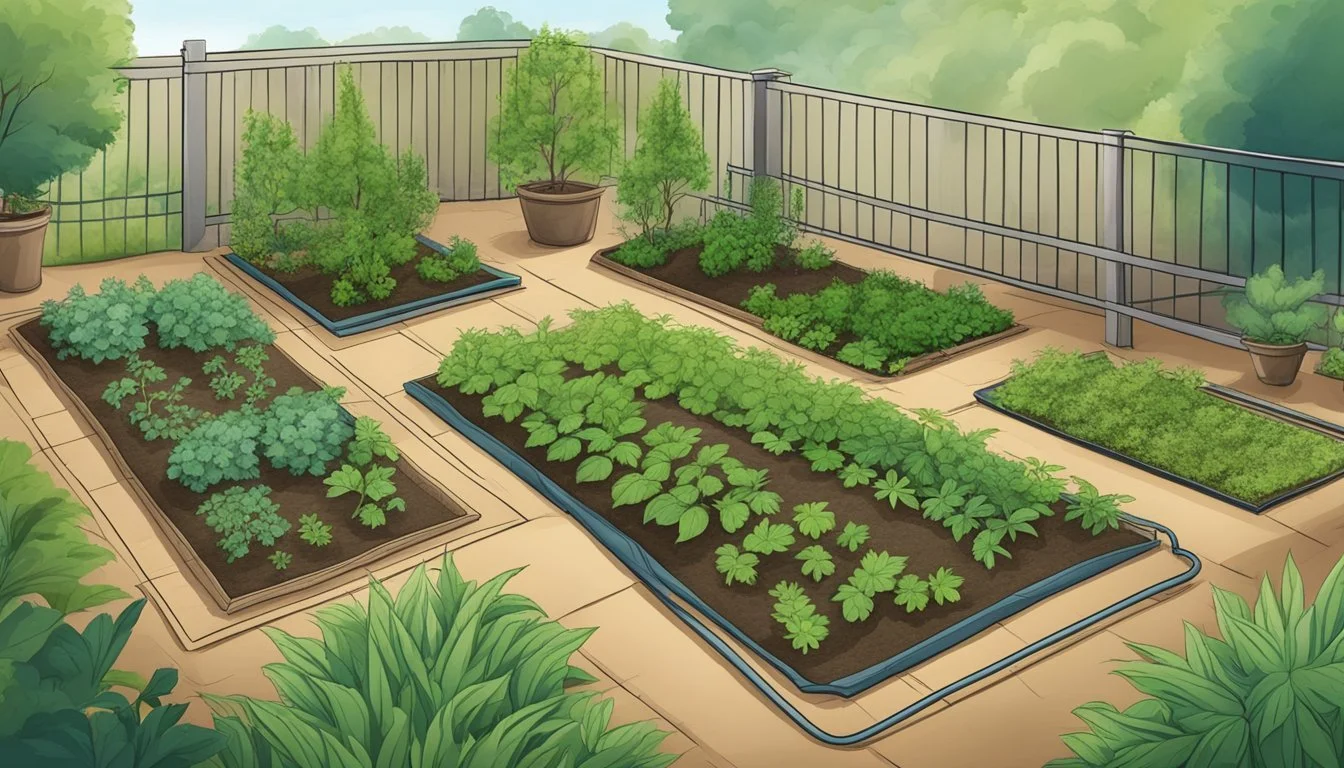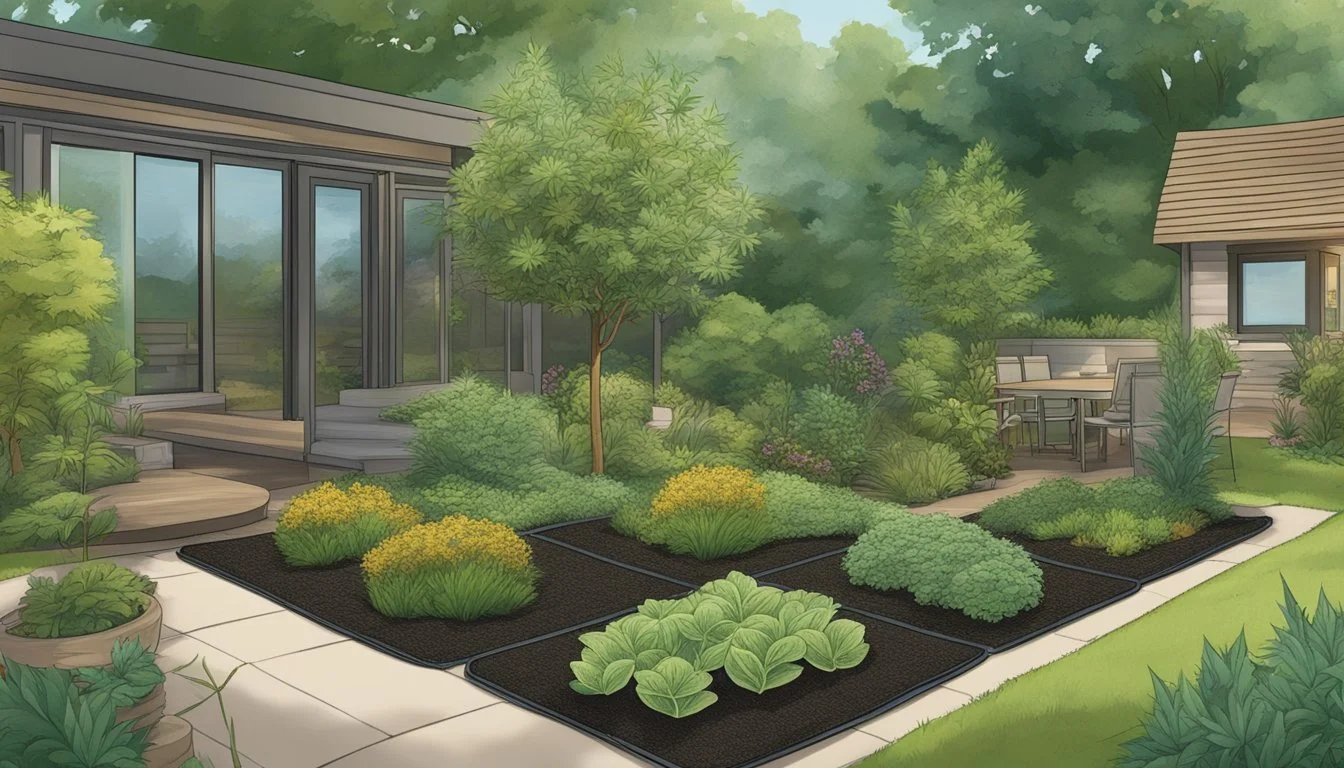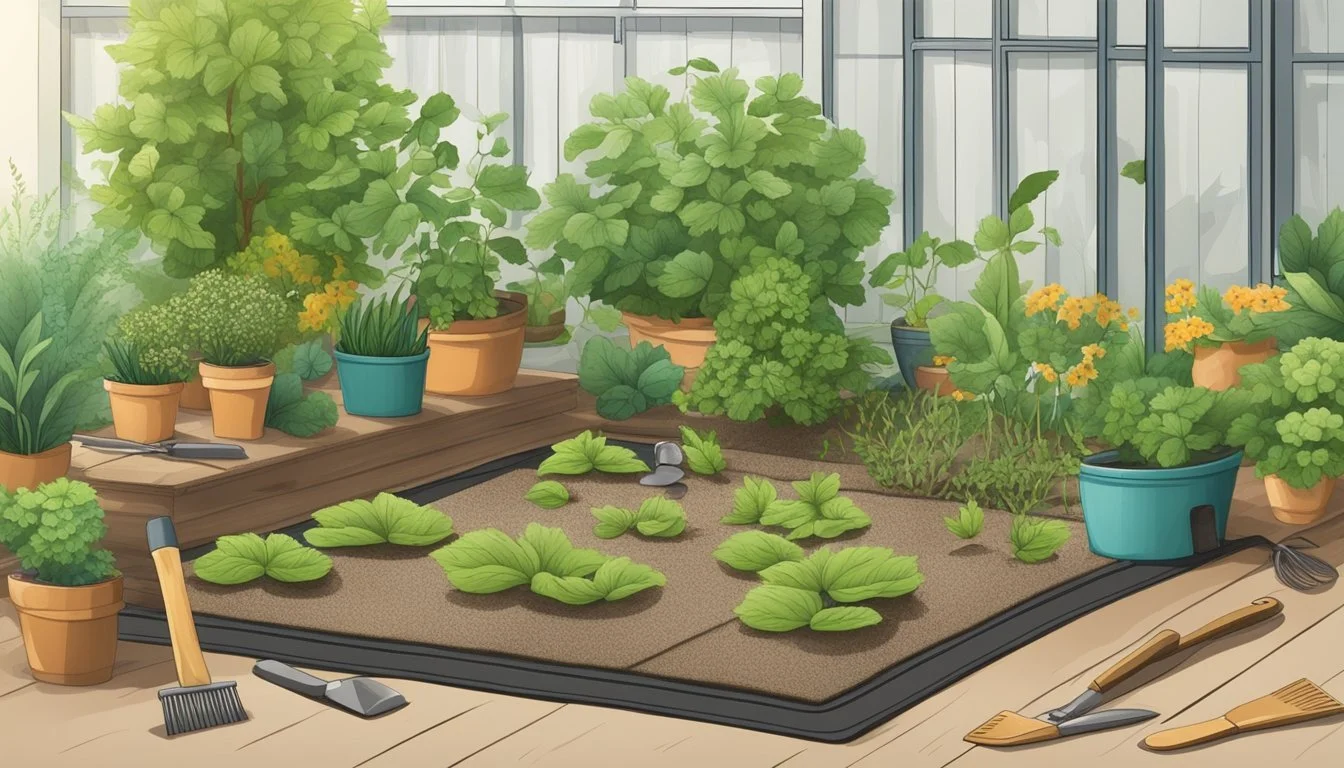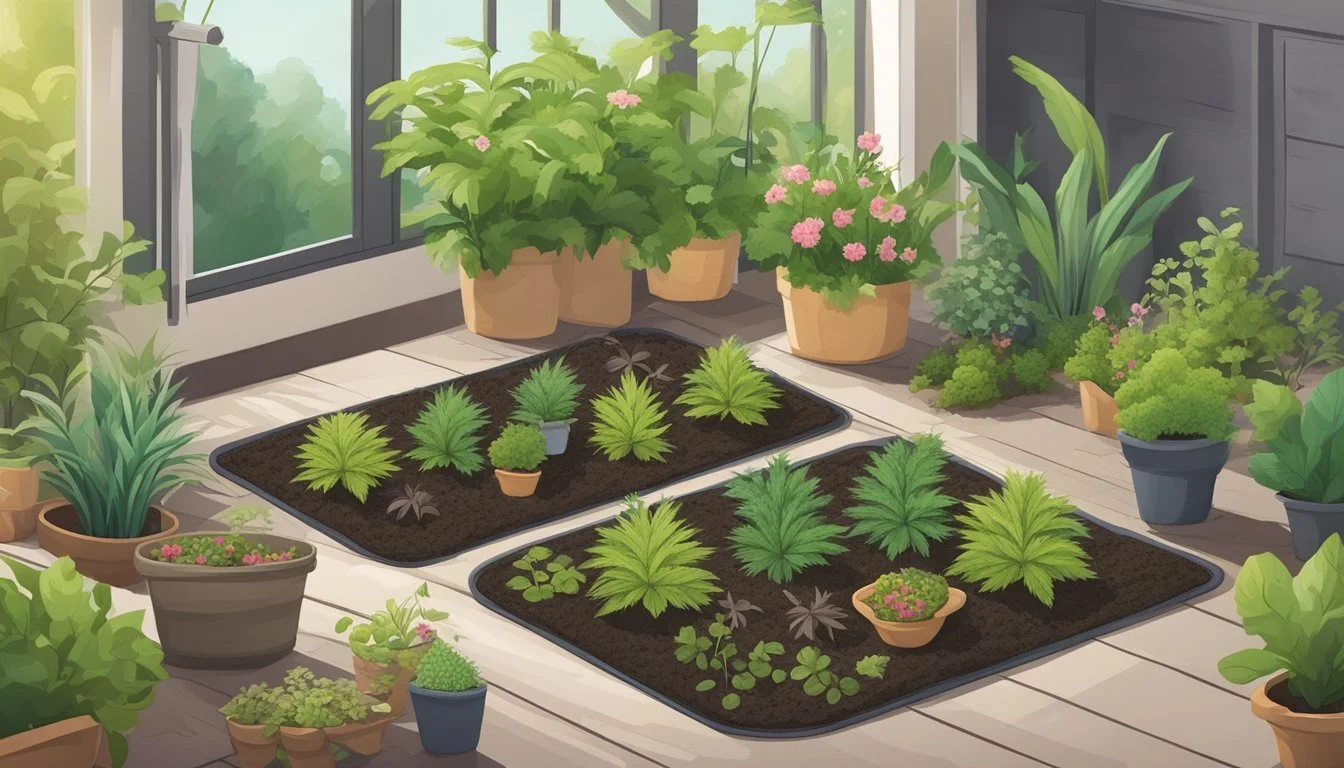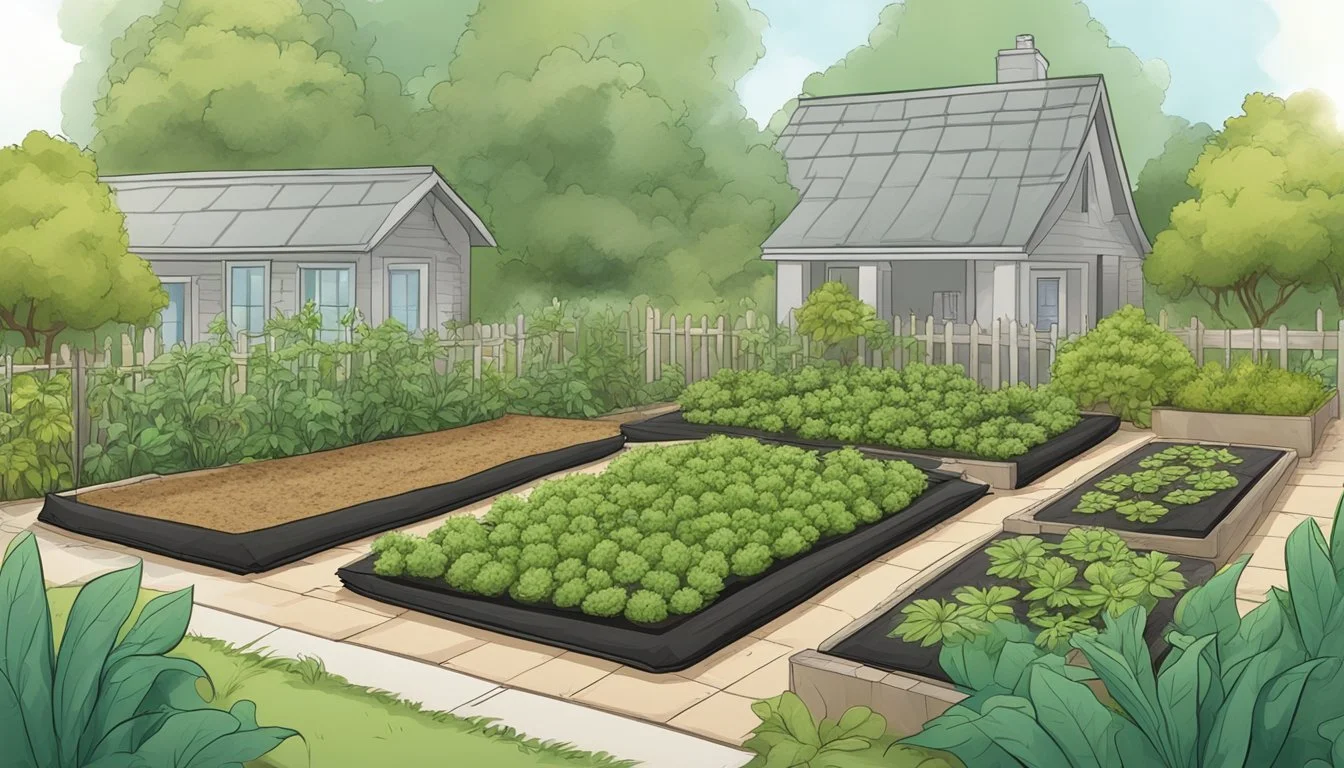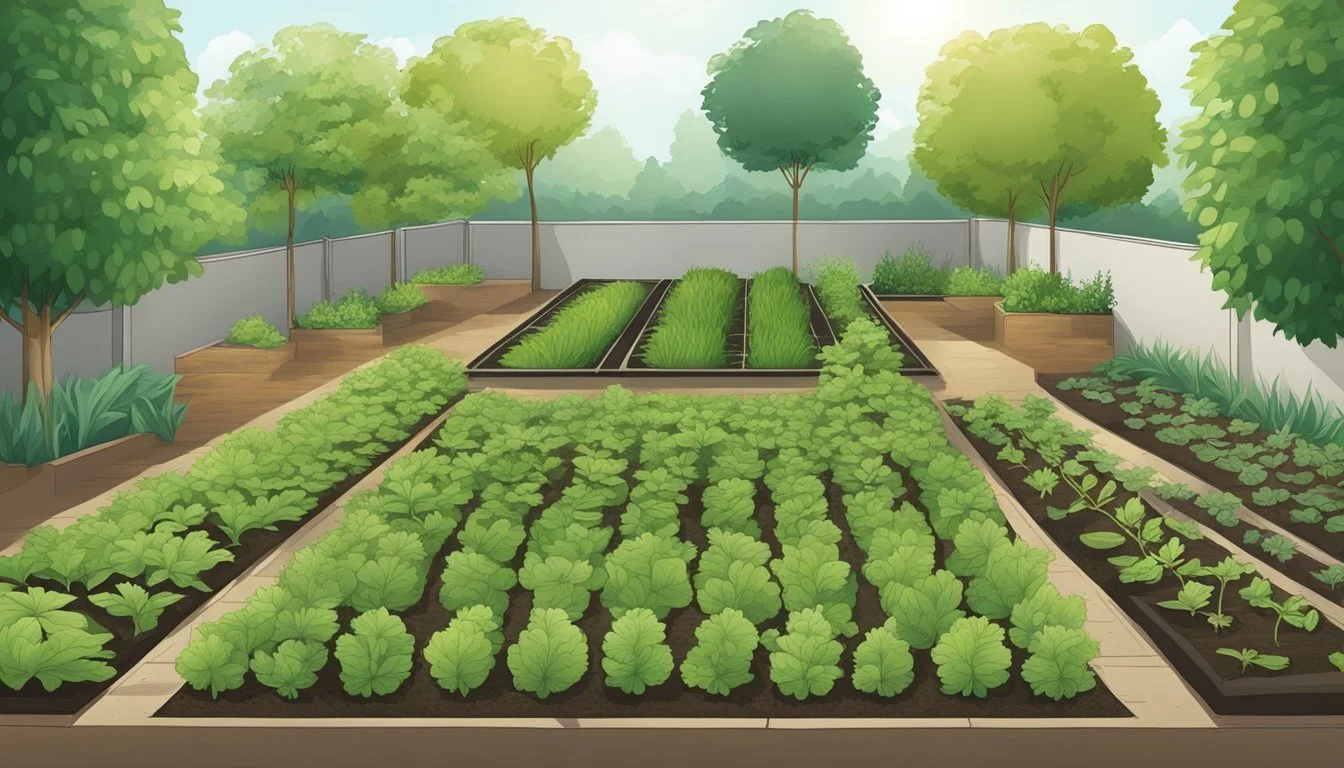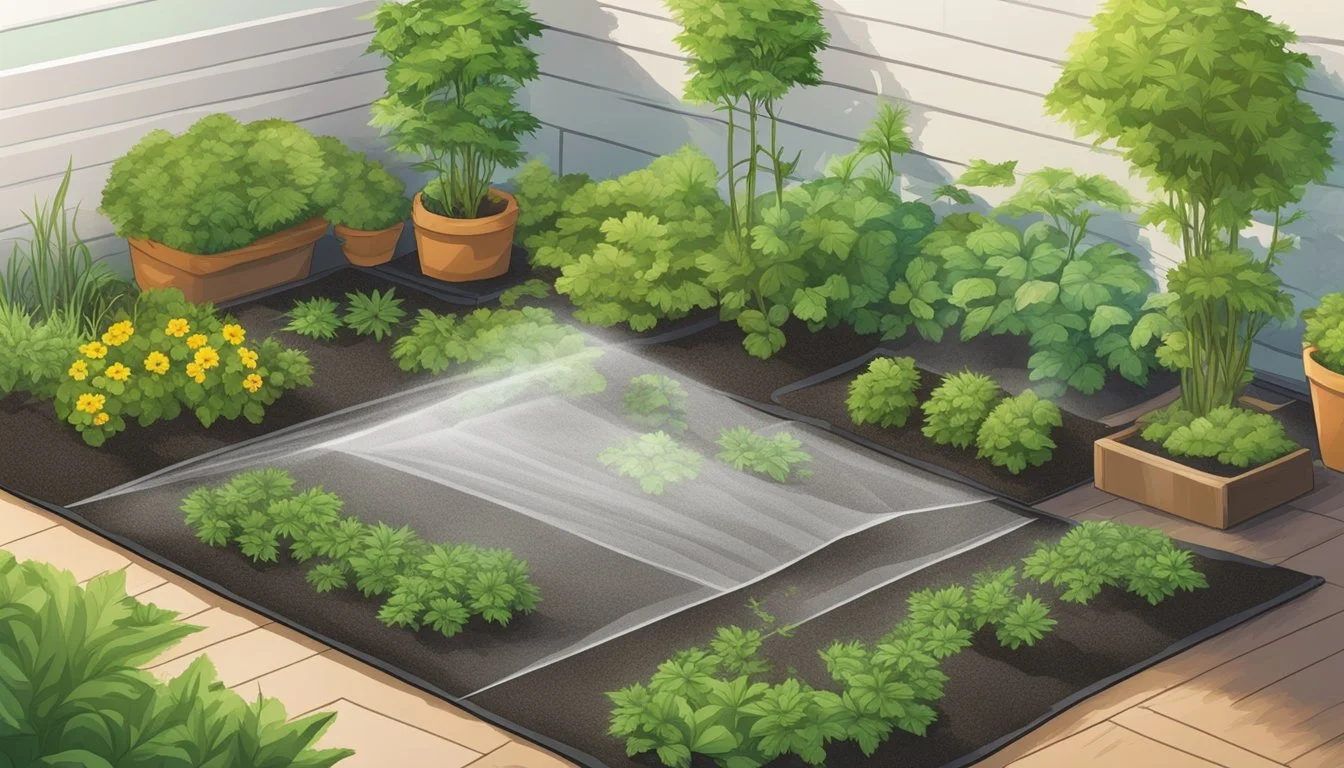The Ultimate Guide to Using Biodegradable Weed Mat
Mastering Eco-Friendly Weed Control
Biodegradable weed mats offer an innovative solution for gardeners and land managers seeking to suppress weeds without resorting to chemical herbicides. The development and use of these mats align with the increasing demand for sustainable and ecologically friendly agricultural practices. These mats are crafted from natural materials, such as hemp, banana fiber, or linseed straw, which are designed to decompose over time, thus enhancing soil health while simultaneously providing effective weed control.
Maintaining a weed-free environment is crucial for the growth and health of cultivated plants. Biodegradable weed mats serve as a barrier, preventing weed germination and growth by blocking sunlight, while still allowing water and nutrients to pass through. This helps in preserving soil moisture and preventing erosion, adding further to the sustainability of the gardening approach.
As environmental concerns take center stage in agricultural practices, the combination of weed suppression and soil improvement offered by biodegradable weed mats makes them an appealing option. Their introduction into the market reflects a shift towards more sustainable practices, providing gardeners and farmers with tools that align with ecological principles and contribute to overall biodiversity.
Understanding Weed Suppression
In the realm of garden management, weed suppression is pivotal in maintaining both agricultural productivity and environmental health. This section explores the underlying mechanisms of weed growth and the advantageous methods for curbing it in an eco-friendly manner.
The Science of Weeds
Weeds are opportunistic plants that can thrive in varied conditions, often outcompeting desired vegetation for resources. They possess certain traits, such as rapid germination and high seed production, which facilitate their invasive nature. Effective weed control requires strategies that inhibit their germination, growth, and reproduction.
Germination Inhibition: Certain biodegradable weed mats can suppress weed germination by blocking sunlight and altering soil conditions.
Growth Prevention: By creating a physical barrier, weed mats limit the growth space available for weeds, thereby restricting their development.
Reproduction Obstacles: By preventing weed growth, these mats also reduce the chances of weed reproduction, as without mature plants, seed dispersion is minimized.
Benefits of Eco-Friendly Weed Control
Eco-friendly weed control methods deliver substantial benefits to the environment compared to traditional methods that employ harmful chemicals. Biodegradable weed mats are a prime example of this, offering a sustainable option that merges convenience with environmental stewardship.
Reduced Chemical Use: Biodegradable weed mats negate the need for herbicides, leading to less chemical runoff and soil contamination.
Soil Health Preservation: These methods protect soil structure and microorganisms, which are often harmed by chemical treatments.
Biodiversity Support: By avoiding harmful chemicals, eco-friendly methods support greater biodiversity, benefiting both fauna and flora.
Weed Mat Basics
Biodegradable weed mats provide an eco-friendly solution for weed suppression in gardening and agriculture by offering a natural barrier against weed growth. They are designed to block sunlight and decompose over time, aligning with sustainable practices.
What Is a Biodegradable Weed Mat?
A biodegradable weed mat is a form of ground cover made from natural materials that are designed to suppress weeds by blocking sunlight and preventing their growth. These mats are an integral component of organic gardening as they avoid the use of synthetic chemicals. Materials commonly used for these mats include coconut fiber (coir), jute, and other natural fibers that allow the mat to decompose into the soil without causing harm to the environment.
How Weed Mats Work
Weed mats operate on a simple principle: they create a physical barrier between the soil and potential weed seedlings. By covering the soil, they block sunlight from reaching the seeds of weeds, inhibiting their ability to germinate and grow. Over time, these natural weed mats decompose, enriching the soil structure and maintaining soil fertility. Their life span and rate of decomposition vary depending on the material composition, providing different durations of weed suppression while contributing to soil health.
Installing Biodegradable Weed Mats
Proper installation of biodegradable weed mats is crucial for effective weed suppression while contributing to an eco-friendly garden. Careful selection of size and material, accurate installation, and regular maintenance are key steps.
Choosing the Right Size and Material
Selecting the appropriate size and material of weed mats is the first step to ensuring satisfactory results. Coir weed mats are a sustainable choice, being both biodegradable and made from natural fibers. They should cover the entire area where weed suppression is desired. It is important to measure the garden space accurately to purchase a mat that fits well, without leaving gaps that would allow weeds to grow through.
Installation Step-by-Step
Prepare the Area: Clear the targeted area of weeds and debris.
Measure and Cut: Using a tape measure and scissors, cut the coir mat to the necessary size. Leave a little extra on each side to ensure full coverage.
Secure the Mat: Flatten the coir mat on the prepared soil. Use garden staples and a hammer to anchor the mat to the ground, ensuring it is flush with the soil.
Plant Cuts: If planting through the mat, cut holes that match the width of the plants’ bases to allow for their growth.
Mulch Application (optional): Cover the mat with a layer of mulch for additional weed suppression and to enhance garden aesthetics.
Maintaining Your Weed Mat
After installation, routine maintenance is essential to extend the life of the coir weed mat. Check periodically for signs of wear or tear and adjust the mat or add more staples if it has become loose. Over time, as the mat begins to degrade, nutrients from the coir will enrich the soil, aiding plant growth. Keep the mat free of debris to minimize pests and diseases, and consider adding a fresh layer of mulch each season to maintain effectiveness.
Integration with Garden Ecosystem
When integrating biodegradable weed mats within a garden's ecosystem, they not only suppress weeds but also play a crucial role in maintaining soil health, regulating moisture, and supporting plant growth.
Impact on Soil Health
Biodegradable weed mats contribute beneficially to the soil ecosystem. Decomposition of the mat adds organic matter to the soil, which enhances its structure and fertility. This organic input supports a diverse range of beneficial microorganisms, vital for nutrient cycling and providing a more robust soil ecosystem. By reducing weed competition, these mats allow soil nutrients to be more available to desired plants.
Retaining Moisture and Nutrients
Effective moisture regulation is key to a healthy garden. Biodegradable weed mats help retain moisture in the soil by reducing evaporation. They act as a barrier that limits water loss, while still permitting rain and irrigation water to reach the soil. Alongside moisture, the mats help to keep nutrients from leaching out of the soil, ensuring they remain accessible for the root systems of vegetables in vegetable gardens, trees, and flower beds.
Supporting Plant Growth
By creating a favorable environment for plant growth, biodegradable weed mats ensure that plants receive adequate moisture and nutrients without the stress of competing with weeds. This promotes healthier, more vigorous growth in garden plants. Whether in vegetable patches, under trees, or within flower beds, these mats can significantly contribute to achieving a lush and productive garden by simplifying maintenance and optimizing conditions for plant development.
Environmental Considerations
Biodegradable weed mats present a solution that addresses environmental concerns associated with weed suppression. They offer an alternative that both reduces reliance on chemical herbicides and supports the conservation of biodiversity.
Reducing Chemical Use and Runoff
Biodegradable weed mats serve as a physical barrier against weeds, diminishing the need for chemical herbicides. Utilizing these mats can lead to a significant decrease in chemical runoff, which is beneficial for both soil and water health. Herbicide use is linked to pollution in waterways caused by rain and irrigation leading to runoff. The implementation of biodegradable weed barriers reduces this environmental impact by providing a safe and effective alternative for weed control.
Promoting Biodiversity
These mats, being porous, allow water and air to reach the soil, supporting the microorganisms vital to a healthy ecosystem. By not utilizing synthetic herbicides and opting for biodegradable materials, the soil's biodiversity can flourish. Additionally, the composition of biodegradable mats often includes natural fibers such as hemp or coir, which can further enrich the soil as they decompose without affecting the existing plant and animal life.
The environmental considerations of employing biodegradable weed mats for weed suppression showcase their role as a key player in sustainable gardening and land management practices.
Alternatives and Supplements
When considering biodegradable weed mats, gardeners should be aware of organic and synthetic alternatives as well as supplementary methods for comprehensive weed suppression. Each option offers unique benefits and can be chosen based on specific gardening needs and environmental considerations.
Organic Mulches
Organic mulches are a natural alternative to biodegradable weed mats. They include:
Compost: Enriches the soil with nutrients as it decomposes.
Straw or Hay: Offers insulation and retains moisture while suppressing weeds.
Wood Chips: Durable and visually appealing, but slower to decompose.
Bark Mulch: Long-lasting and ideal for pathways and ornamental beds.
Leaf Mold: Improves soil structure and is often free if collected from one's own yard.
Gardeners may also use peat blocks as mulch; however, due to sustainability concerns with peat harvesting, its use is often discouraged.
Companion Planting
Companion planting enhances garden health and can naturally deter weeds by:
Creating shade with taller plants to suppress weed growth.
Encouraging biodiversity which can reduce the chances of weed dominance.
Moreover, certain plants release allelopathic chemicals that inhibit weed germination and growth, functioning as a biological weed barrier.
Synthetic Barrier Options
In contrast to organic mulches and companion planting, synthetic barrier options provide another layer of weed control. Notable synthetic materials include:
Landscape Fabric: A permeable option allowing water and nutrients to penetrate while obstructing weed growth.
Black Plastic: Heats the soil and provides a strong barrier against weeds but might not allow soil to breathe as effectively as fabric.
When selecting synthetic materials, it is important to consider their environmental impact and longevity in the garden. Each option requires careful installation to maximize efficacy and minimize damage to the desired vegetation.
Long-Term Strategy and Practices
In cultivating a productive garden, gardeners must consider both immediate and long-term strategies for weed suppression. Employing biodegradable weed mats not only aids in immediate weed control but also supports organic gardening practices over time.
Strategies for Longevity
When utilizing biodegradable weed mats, their longevity is a key factor. Gardeners should:
Select high-quality, durable mats that withstand the elements for multiple seasons.
Properly install the mats with secure anchoring to prevent displacement by wind or animals.
Monitor the degradation process to replace or reinforce the matting when necessary, ensuring consistent weed suppression without labor-intensive removal.
Weed Mat and Fertility Management
Biodegradable weed mats influence garden fertility and must be managed to support long-term soil health:
Before application:
Conduct soil tests to determine baseline fertility levels.
Implement necessary amendments to support plant growth beneath the mats.
During use:
Observe plant performance for signs of nutrient deficiencies or excesses.
Use compostable materials underneath the mats to enhance decomposition, improving soil quality and deterring weed seeds from taking root.
With attentive maintenance and mindful integration into gardening practices, biodegradable weed mats can serve as an effective component in reducing weed pressure and enhancing soil fertility over the years.
Economics of Biodegradable Weed Mats
Biodegradable weed mats represent a significant advancement in agricultural resource management, balancing cost-efficiency with environmental stewardship.
Cost-Effectiveness and Savings
Biodegradable weed mats are often compared favorably against synthetic alternatives in terms of long-term financial savings. Upfront, the price of these eco-friendly mats may appear higher, but they lead to affordable pricing structures over time due to reduced labor and herbicide costs.
Farmers and gardeners can experience savings on multiple fronts:
Labor: Reduced manpower required for weeding translates into less expenditure on wages.
Herbicides: With physical barriers in place, there's a diminished need for chemical weed control, slashing input costs and potential environmental clean-up expenses.
Waste Management: As these mats decompose, they eliminate the cost and labor associated with the removal and disposal of traditional synthetic weed barriers.
Moreover, the use of biodegradable weed mats can be seen as an investment in renewable resources. These mats are typically created from agricultural waste materials, such as hemp or coir—derived from coconut fiber—which would otherwise be left unused. Leveraging such waste into productive materials emphasizes the circular economy concept, where waste is minimized, and materials are kept in use for as long as possible.
Accessible to both commercial and individual users, these mats embody the principles of sustainable farming by making efficient use of available resources and choosing renewable raw materials. This approach further endorses their position as a fiscally responsible option in long-term weed suppression strategies.
FAQs and Troubleshooting
This section covers commonly asked questions and provides guidance on resolving issues related to the installation and maintenance of biodegradable weed mats for effective weed suppression.
Common Questions
Q: How does one appropriately cut holes in a biodegradable weed mat?
A: To accommodate plants, one should measure the base of the plant and cut holes in the weed mat to match this size, ensuring a snug fit around the stem. This prevents weed growth while allowing the plant to receive adequate sunlight and air.
Q: How often should a biodegradable weed mat be replaced?
A: Biodegradable weed mats typically last 1-3 years, depending on the material and environmental conditions. Regular inspection will indicate when the material begins to break down, signaling the need for replacement.
Solving Installation and Maintenance Issues
Ensuring Proper Shape and Fit:
To prevent issues during installation, one should lay the mat flat, ensuring it conforms to the area's shape. If frequent watering is anticipated or the area is irregular, cutting the mat to the specific shape beforehand is advisable. Secure the edges with appropriate pegs to keep the mat in place.
Dealing with Watering and Mulching:
In case of troubles with water reaching the soil, ensure that biodegradable weed mats are permeable and facilitate water and nutrient flow. Over the mat, an organic layer of mulch, such as low or high EC coco chips, can help conserve moisture and add nutrients to the soil as it decomposes.
Addressing Chemical Concerns:
For individuals worried about toxic materials, it is essential to choose a biodegradable weed mat that is certified non-toxic. These mats should not release harmful chemicals into the soil, making them an eco-friendly option for weed suppression.
Conclusion
Biodegradable weed mats offer an effective weed control solution for gardeners who prioritize ecology in their practices. These mats are derived from natural fibers such as coir, eliminating the reliance on synthetic materials and the subsequent environmental impact.
Efficiency: They suppress weed growth by blocking light and minimizing weeding labor.
Eco-Friendly: As a plus for the planet, these mats decompose and enrich the soil over time.
Water Conservation: They help maintain soil moisture, benefiting plant health.
Gardeners can thus rely on these mats for a sustainable approach to managing gardens and landscapes. Without resorting to chemicals, they are protecting the delicate balance of their local ecosystem.
In summary, biodegradable weed mats represent a fusion of functionality and environmental stewardship. As the mats decompose, they become part of the soil structure, fostering a closed-loop gardening cycle. This convergence of agricultural efficiency and ecological awareness is the hallmark of contemporary sustainable practices.

